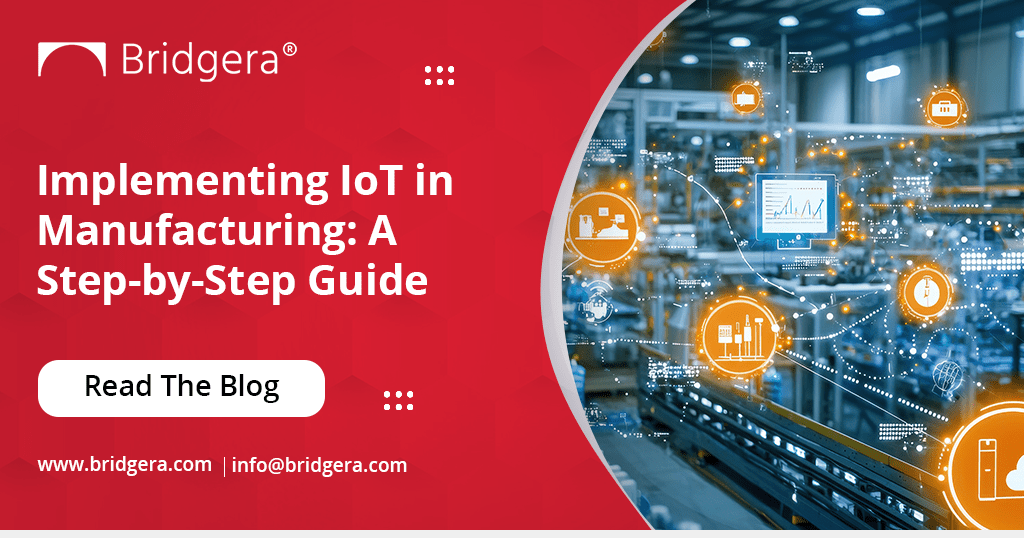Implementing IoT in your manufacturing firm is not a small decision that you can make lightly. You’re probably already familiar with the basic requirements for implementing IoT in manufacturing like cloud computing, data analytics, high-end security, and the final user experience.
While these are their key components, we’ll give you a step-by-step checklist to ensure that you’ve covered all your bases before launching your IoT project in manufacturing. We’ll also look at the top challenges and how you can best overcome them.
Step 1: Define Your Objectives, Scope, and Use Cases
Even though this seems obvious, you’d be surprised to know that 25% IoT projects fail due to unclear objectives and scope. First, ensure that the IT team and the management agree on objectives, the scope, and the KPIs you’ll measure.
Then, identify clear problems that your IoT platform can solve. This could be anything from reducing machine downtime to enhancing workflow, or asset management. Be specific about how you will measure the outcomes.
Finally, decide whether you want to implement IoT to solve a specific problem and limit its current scope before scaling up.
Step 2: Audit Your Existing Technologies
A complete audit of your assets, technologies, maintenance, and other costs is essential before implementation. Here’s a handy checklist of areas to audit.
- Current utility expenses
- Equipment or devices for IoT enablement
- Expenses on repair and maintenance with a forecast of future expenses
- Variables in the working environment across branches and climate zones
- Assess the status of equipment like reliability, output accuracy, expected wear and tear, etc.
- Outline your connectivity options (on-cloud vs. On-premises), network gateway options, and security estimates
Step 3: Choose the Right IoT Technologies
Evaluate IoT technologies based on factors crucial to your success. This could include factors like reliability, scalability, data analytics, and technical knowledge. Here, you’ll need to evaluate hardware, IoT connectivity solutions, and IoT platforms.
- IoT hardware: This includes sensors that will gather data on factors such as temperature, vibration, energy consumption, etc. You’ll also need a connection device to transmit this data to the cloud. You might also need actuators, edge computers, thermostats, or IP cameras based on your end-goal.
- IoT platform: Your IoT platform is a crucial component as it serves as a central repository where your IoT data is securely stored and analyzed. A customized IoT platform would help you with integrating it with your existing systems, scaling up, and your use cases.
Step 4: Find the Right Data Management Strategies & Security
First, plan how your data will be collected and stored. Cloud storage has the advantage of storing larger volumes and velocity of data; on-premises storage will give you enhanced control and security but limited storage.
Then, identify the kinds of data that will be needed for your use cases. Since the volume and velocity of data can be overwhelming, non-control applications only need to monitor data when there’s a variation over a few minutes. Finally, identify your analytics tools based on your use cases.
Don’t ignore security concerns at this stage. Implement multiple layers of security to protect your sensitive data and to prevent breaches.
Step 5: Run Pilot Tests & Streamline Integration with Existing Systems
The next step is to run pilot tests on a small scale to measure the accuracy and effectiveness of your IoT implementation. At this stage, you’ll need to streamline and test the integration of your IoT solution with your existing systems without major disruptions. You would need to use APIs (Application Programming Interfaces) to enable exchange between various systems.
Step 6: Create Your full-scale Implementation Strategy
Here, you’ll need a team of experts to analyze how your IoT implementation can be successfully scaled without disruption. A team of experts can better analyze how these complex systems interact with one another and troubleshoot problems as they arise. Once you have a prototype approved by this team, you can begin implementing your IoT solution carefully.
At this stage, you’ll also have to train your staff and personnel to get the most out of your IoT solution for manufacturing. After all, it’ll be impossible to reap the benefits of IoT without the right talent to leverage it.
Step 7: Monitor & Iterate Your Strategies
Finally, you’ll need to regularly monitor your data. Measure the KPIs mentioned in your goal and chart any improvements or decreases over the months. Chart trends and patterns regularly.
Create a healthy feedback loop with all stakeholders. This will ensure that employees can give feedback based on real-time information. Iterate this process and offer continual training for your staff to maximize their productivity.
And voila! You now have an overview of the complexities of implementing an IoT solution for manufacturing.
The Right Implementation Partner Can Help You Scale Rapidly
Having the right partner for implementing your IoT solution is crucial to your continued success.
At Bridgera, we leverage close to a decade of our experience working with manufacturers to troubleshoot all problems that arise. Our white-label IoT solutions are customized for each client. Our team of IoT experts collaborate closely with your in-house talent to get you the best of both worlds.
We’ll give you an IoT PoC solution in two weeks or less! So, you can start small and scale rapidly as your use cases and needs evolve.
Contact us today for a free consultation with our IoT experts!
About Bridgera: Bridgera effortlessly combines innovation and expertise to deliver cutting-edge solutions using connected intelligence. We engineer experiences that go beyond expectations, equipping our clients with the tools they need to excel in an increasingly interconnected world. Since our establishment in 2015, Bridgera, headquartered in Raleigh, NC, has specialized in crafting and managing tailored SaaS solutions for web, mobile, and IoT applications across North America.
About Author: Krishna Varma is a writer and researcher, who enjoys writing about technology, IoT, and lifestyle. When she isn’t writing and reading, you’ll find her relaxing with a quiet cup of tea over the weekends.
